Your cart is currently empty!
Tag: Troubleshooting

The Importance of Proper Data Center Troubleshooting Procedures
In today’s digital age, data centers play a crucial role in storing, processing, and managing vast amounts of information for businesses and organizations. With the increasing reliance on data centers, it is essential to have proper troubleshooting procedures in place to ensure the smooth operation and optimal performance of these facilities.Proper data center troubleshooting procedures are essential for identifying and resolving issues that may arise in the data center environment. These procedures help to minimize downtime, prevent data loss, and ensure the security and reliability of the data stored in the center.
One of the key reasons why proper troubleshooting procedures are important is to address issues quickly and effectively. When a problem occurs in a data center, it can have significant consequences for the organization, including loss of revenue, damage to reputation, and potential security breaches. By having a systematic approach to troubleshooting, data center staff can quickly identify the root cause of the issue and implement a solution to resolve it.
Another important aspect of proper troubleshooting procedures is the ability to prevent future issues from occurring. By documenting and analyzing the causes of problems that arise in the data center, staff can identify trends and patterns that may indicate underlying issues with the infrastructure or systems. This proactive approach can help to prevent similar issues from happening in the future, leading to improved reliability and performance of the data center.
Additionally, proper troubleshooting procedures help to ensure that data center staff are well-equipped to handle any issues that may arise. By having clear guidelines and protocols in place, staff can quickly and confidently respond to problems, minimizing the impact on the organization. This also helps to improve the overall efficiency and effectiveness of the data center operations.
In conclusion, proper data center troubleshooting procedures are essential for maintaining the smooth operation and optimal performance of data centers. By having a systematic approach to troubleshooting, organizations can quickly identify and resolve issues, prevent future problems, and ensure the security and reliability of the data stored in the center. Investing in proper troubleshooting procedures is a crucial step in ensuring the success and longevity of data center operations.
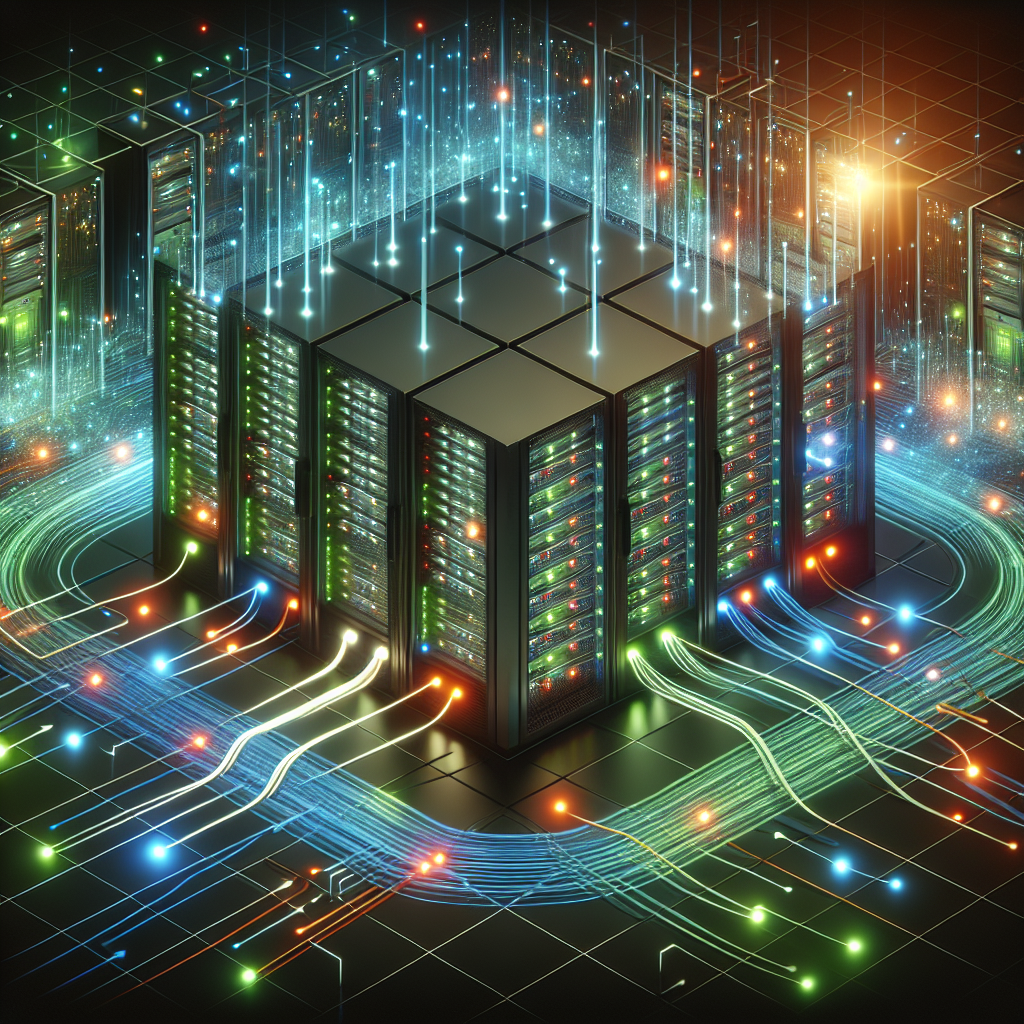
Troubleshooting Data Center Connectivity Problems
Data centers are the backbone of modern businesses, providing the infrastructure needed to store, manage, and process vast amounts of data. However, when connectivity problems arise, it can disrupt operations and cause significant downtime. Troubleshooting data center connectivity problems requires a systematic approach to identify and resolve issues quickly and efficiently.One common issue that can affect data center connectivity is network congestion. This occurs when the network becomes overloaded with traffic, leading to slow data transfer speeds and dropped connections. To troubleshoot network congestion, administrators can use network monitoring tools to identify the source of the congestion and take steps to alleviate it, such as redistributing traffic across different network paths or adding more bandwidth.
Another common connectivity problem in data centers is a misconfigured network device. This can occur when a switch, router, or firewall is not properly configured, leading to connectivity issues and network downtime. To troubleshoot a misconfigured network device, administrators can review the device’s configuration settings, check for any errors or inconsistencies, and make any necessary adjustments to ensure proper connectivity.
In addition to network congestion and misconfigured devices, physical connectivity issues can also cause problems in data centers. This can include issues with cables, connectors, or network ports that may become loose or damaged over time. To troubleshoot physical connectivity problems, administrators can visually inspect cables and connectors for any signs of damage, re-seat or replace any faulty components, and test connectivity to ensure proper operation.
Furthermore, software-related issues can also impact data center connectivity. This can include problems with network protocols, firewall rules, or software updates that may affect network performance. To troubleshoot software-related connectivity problems, administrators can review network configurations, check for any software updates or patches, and test connectivity to identify any potential issues.
In conclusion, troubleshooting data center connectivity problems requires a proactive and systematic approach to identify and resolve issues quickly. By using network monitoring tools, reviewing device configurations, inspecting physical connections, and checking software settings, administrators can effectively troubleshoot connectivity issues and ensure the smooth operation of their data center infrastructure.
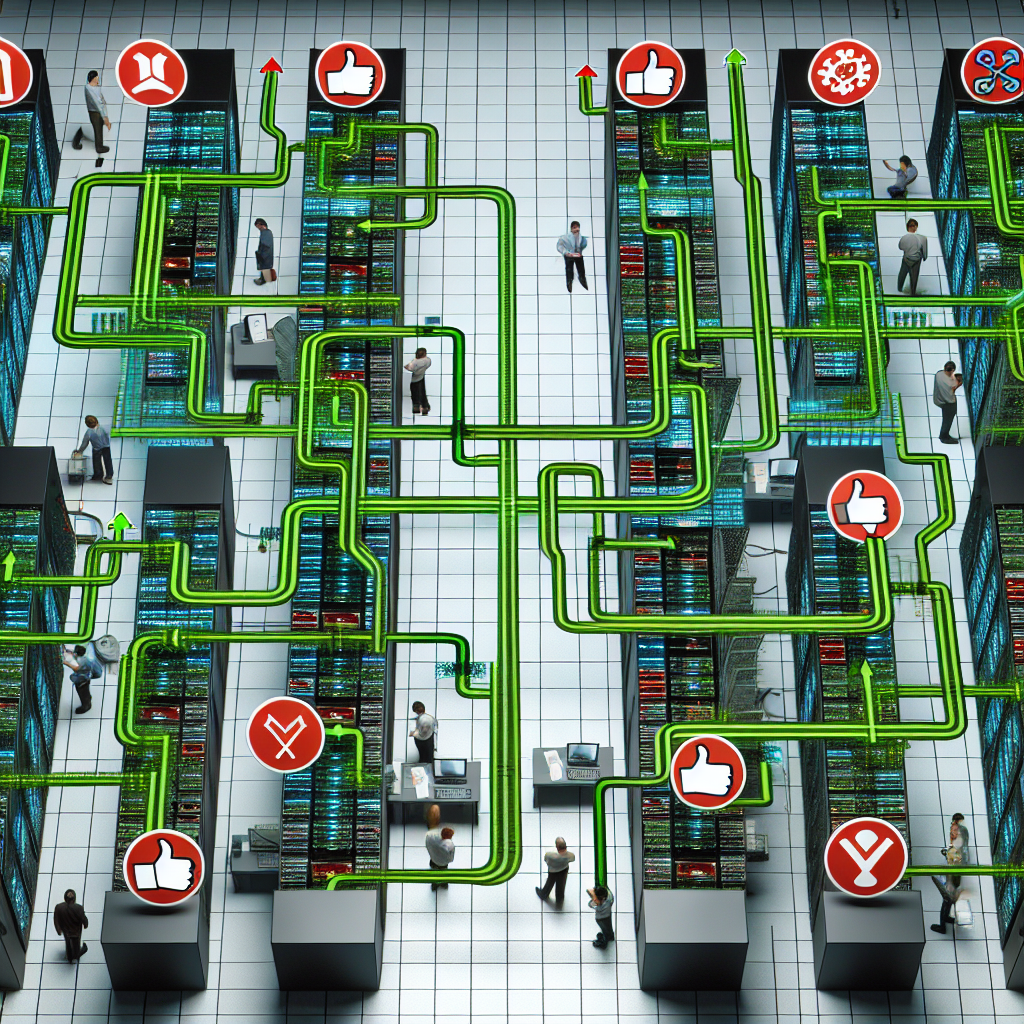
The Dos and Don’ts of Data Center Troubleshooting
Data centers are the backbone of any organization’s IT infrastructure, housing crucial information and systems that keep businesses running smoothly. When issues arise in a data center, it’s essential to troubleshoot and resolve them quickly to prevent downtime and potential data loss. However, troubleshooting can be a complex process that requires careful planning and execution. To help you navigate this challenging task, here are some dos and don’ts of data center troubleshooting.Do: Document everything
One of the most important steps in troubleshooting a data center issue is to document everything. This includes keeping a detailed log of the problem, the steps taken to troubleshoot it, and any changes made along the way. This documentation can be invaluable when trying to identify patterns or recurring issues, as well as when passing on information to other team members or external support.
Don’t: Make changes without testing
While it may be tempting to make quick changes to resolve a data center issue, it’s crucial to test any changes thoroughly before implementing them. Making hasty changes without adequate testing can lead to further problems down the line, potentially causing more downtime and data loss. Always test changes in a controlled environment before rolling them out to the production data center.
Do: Use monitoring tools
Monitoring tools are essential for keeping track of the health and performance of a data center. These tools can help identify potential issues before they become major problems, allowing you to take proactive measures to prevent downtime. Make sure to regularly monitor key metrics such as CPU usage, disk space, and network traffic to catch any anomalies early on.
Don’t: Ignore alerts
If monitoring tools alert you to a potential issue in the data center, it’s important not to ignore them. Ignoring alerts can lead to more severe problems that could have been avoided with timely intervention. Make sure to investigate any alerts promptly and take appropriate action to resolve the issue.
Do: Collaborate with team members
Data center troubleshooting is a team effort, and collaboration is key to success. Make sure to involve all relevant team members in the troubleshooting process, including IT staff, network engineers, and system administrators. By working together, you can leverage each team member’s expertise and skills to quickly identify and resolve issues.
Don’t: Panic
When faced with a data center issue, it’s easy to feel overwhelmed and panicked. However, panicking can cloud your judgment and lead to rash decisions that could worsen the situation. Stay calm and focused, and approach the troubleshooting process methodically and systematically.
In conclusion, data center troubleshooting is a critical task that requires careful planning and execution. By following these dos and don’ts, you can navigate the troubleshooting process effectively and resolve issues quickly and efficiently. Remember to document everything, test changes thoroughly, use monitoring tools, collaborate with team members, and above all, stay calm and focused.

Troubleshooting Data Center Security Breaches: A Comprehensive Guide
Data centers are crucial hubs of information and data storage for businesses of all sizes. With the increasing reliance on technology and digital infrastructure, data centers have become prime targets for cyber attacks and security breaches. In order to protect sensitive information and prevent data loss, it is essential for businesses to have a comprehensive understanding of data center security and how to troubleshoot breaches effectively.Identifying the Signs of a Data Center Security Breach
The first step in troubleshooting a data center security breach is to identify the signs of a potential breach. Some common signs of a security breach include:
– Unusual network activity or suspicious traffic patterns
– Unauthorized access to sensitive data or systems
– Changes in user permissions or access rights
– Unexplained system slowdowns or crashes
– Missing or corrupted data
– Strange or unfamiliar files or software on the network
If any of these signs are present, it is important to act quickly and investigate the source of the breach in order to minimize damage and prevent further attacks.
Troubleshooting Data Center Security Breaches
Once a security breach has been identified, there are several steps that businesses can take to troubleshoot the breach and mitigate its impact. Some key troubleshooting steps include:
1. Conduct a thorough security audit: In order to identify the source of the breach, businesses should conduct a comprehensive security audit of their data center systems and networks. This audit should include a review of user access controls, network configurations, and security protocols in order to identify any vulnerabilities or weaknesses that may have been exploited by attackers.
2. Implement security patches and updates: In many cases, security breaches occur as a result of outdated software or unpatched vulnerabilities. Businesses should regularly update their systems and software to ensure that they are protected against the latest security threats. This includes installing security patches, updates, and antivirus software to protect against malware and other malicious attacks.
3. Monitor network traffic: Businesses should regularly monitor their network traffic and log files in order to detect any unusual or suspicious activity. By monitoring network traffic, businesses can identify potential security breaches and take action to prevent further damage.
4. Implement multi-factor authentication: Multi-factor authentication is an essential security measure that can help prevent unauthorized access to sensitive data and systems. By requiring users to provide multiple forms of identification, such as a password and a security token, businesses can add an extra layer of protection to their data center systems.
5. Train employees on security best practices: Human error is often a major factor in security breaches, so it is important for businesses to educate their employees on security best practices and protocols. This includes training employees on how to identify phishing emails, use secure passwords, and report any suspicious activity to the IT department.
By following these troubleshooting steps and implementing robust security measures, businesses can protect their data center systems from security breaches and minimize the risk of data loss. In today’s digital age, data center security is more important than ever, and businesses must take proactive steps to safeguard their sensitive information and prevent cyber attacks.

Troubleshooting Common Issues with Actuators: Tips and Tricks
Actuators are essential components in a wide range of industrial and commercial applications, from robotics to HVAC systems. These devices are responsible for converting electrical signals into mechanical movement, allowing for precise control of various systems.However, like any mechanical device, actuators can experience issues that may hinder their performance. In this article, we will discuss some common problems that may arise with actuators and provide some tips and tricks for troubleshooting and resolving these issues.
1. Inconsistent movement: One of the most common issues with actuators is inconsistent movement, where the actuator may move too slowly, too quickly, or fail to move at all. This can be caused by a variety of factors, such as low voltage, mechanical obstructions, or worn out components.
To troubleshoot this issue, start by checking the voltage supplied to the actuator. Ensure that it is within the recommended range specified by the manufacturer. If the voltage is correct, check for any obstructions that may be preventing the actuator from moving smoothly. Inspect the actuator for any signs of wear or damage, such as broken gears or worn out bearings, and replace any faulty components.
2. Noisy operation: Another common issue with actuators is noisy operation, which can be caused by friction between moving parts, loose components, or worn out bearings. This can not only be annoying but also indicate potential damage to the actuator.
To troubleshoot noisy operation, start by lubricating the moving parts of the actuator to reduce friction. Tighten any loose components and ensure that all fasteners are securely in place. If the noise persists, inspect the bearings for signs of wear or damage and replace them if necessary.
3. Overheating: Actuators can also overheat due to prolonged use or insufficient cooling. Overheating can lead to decreased performance and even damage to the actuator if left unresolved.
To troubleshoot overheating, ensure that the actuator is not being overloaded or operated beyond its rated capacity. Provide adequate cooling by installing a fan or heat sink to dissipate heat generated during operation. If the actuator continues to overheat, consider reducing the load or upgrading to a higher-rated actuator.
4. Erratic movement: Erratic movement of an actuator can be caused by electrical issues, such as signal interference or incorrect wiring. This can result in the actuator moving unpredictably or failing to respond to commands.
To troubleshoot erratic movement, check the wiring connections to ensure they are secure and properly connected. Inspect the electrical signals being sent to the actuator for any interference or noise that may be affecting its operation. Consider using shielded cables or isolating the actuator from other electrical components to minimize interference.
In conclusion, troubleshooting common issues with actuators requires a systematic approach to identify and resolve the underlying causes. By following the tips and tricks outlined in this article, you can effectively troubleshoot and resolve issues with actuators to ensure optimal performance and reliability in your systems.
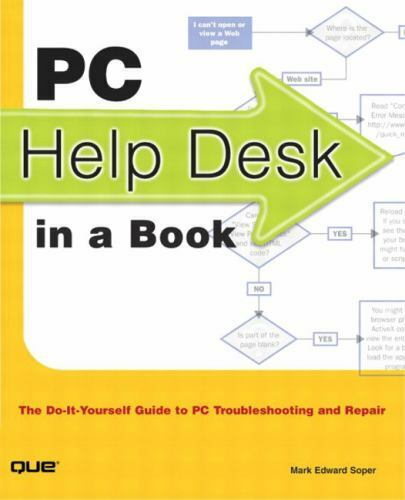
PC Help Desk in a Book: The Do-it-Yourself Guide to PC Troubleshooting an – GOOD

PC Help Desk in a Book: The Do-it-Yourself Guide to PC Troubleshooting an – GOOD
Price : 4.13
Ends on : N/A
View on eBay
Are you tired of calling tech support every time your computer acts up? Look no further than “PC Help Desk in a Book: The Do-it-Yourself Guide to PC Troubleshooting.” This comprehensive guide will walk you through common computer issues and provide step-by-step instructions on how to fix them yourself.From slow performance to virus removal, this book covers it all. Say goodbye to long wait times and expensive service fees – with “PC Help Desk in a Book,” you’ll be able to troubleshoot your PC like a pro.
Don’t let technical issues hold you back any longer. Pick up a copy of “PC Help Desk in a Book” today and take control of your computer problems. Your wallet and your sanity will thank you.
#Desk #Book #DoitYourself #Guide #Troubleshooting #GOOD, Help Desk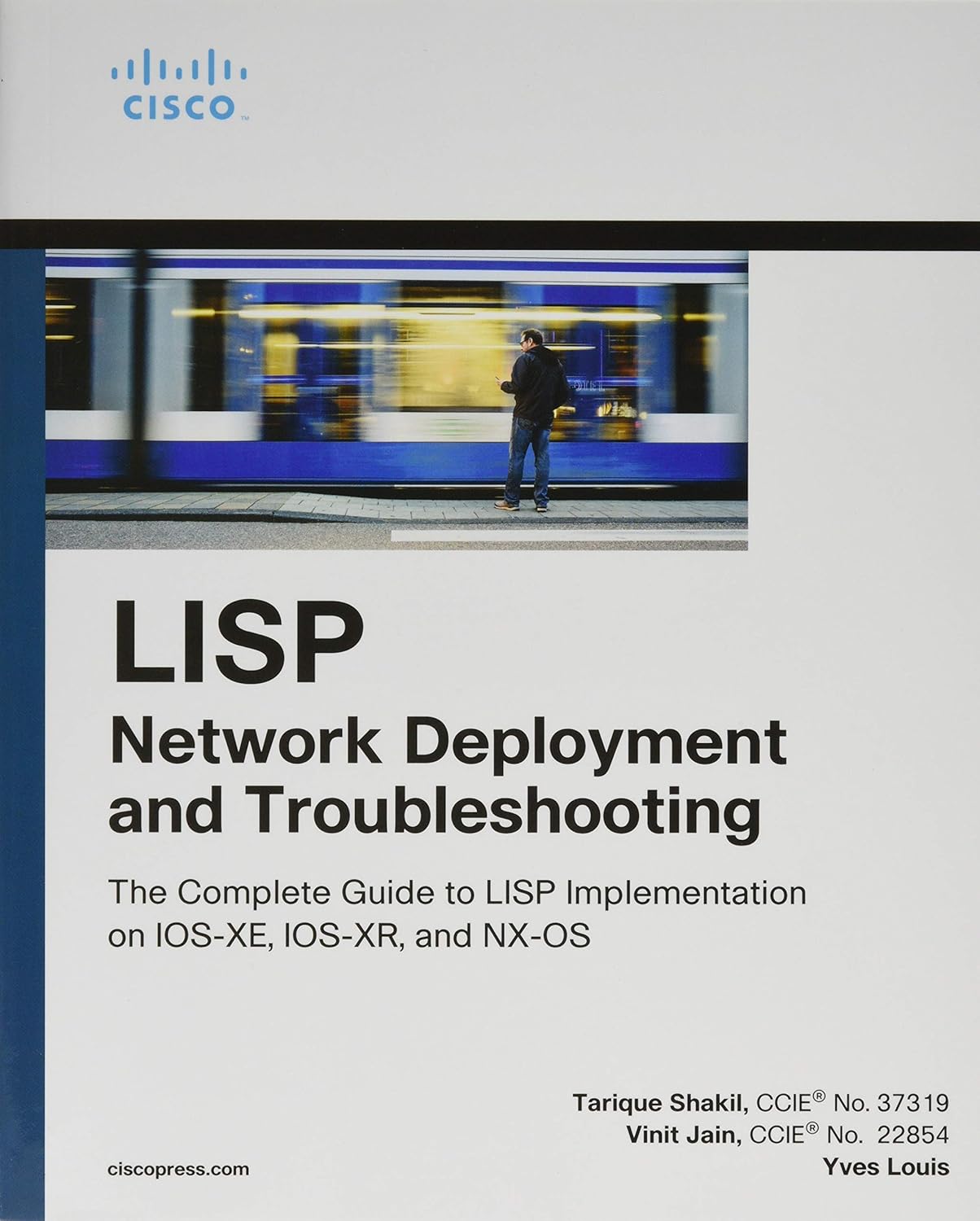
LISP Network Deployment and Troubleshooting: The Complete Guide to LISP Implementation on IOS-XE, IOS-XR, and NX-OS (Networking Technology)
Price: $59.42
(as of Dec 23,2024 00:48:13 UTC – Details)
Publisher : Cisco Press; 1st edition (November 15, 2019)
Language : English
Paperback : 624 pages
ISBN-10 : 1587145065
ISBN-13 : 978-1587145063
Item Weight : 2.2 pounds
Dimensions : 7.4 x 1.75 x 9.15 inches
LISP Network Deployment and Troubleshooting: The Complete Guide to LISP Implementation on IOS-XE, IOS-XR, and NX-OS (Networking Technology)Are you looking to implement Locator/ID Separation Protocol (LISP) in your network but don’t know where to start? Look no further! In this comprehensive guide, we will walk you through the deployment and troubleshooting of LISP on IOS-XE, IOS-XR, and NX-OS platforms.
LISP is a powerful protocol that enables scalable and efficient routing by separating location and identity information. By implementing LISP in your network, you can reduce the size of your routing tables, improve traffic engineering, and enhance network security.
In this guide, we will cover everything you need to know to successfully deploy LISP in your network. We will start by explaining the basics of LISP and its benefits. Then, we will walk you through the step-by-step process of configuring LISP on IOS-XE, IOS-XR, and NX-OS devices.
Additionally, we will provide troubleshooting tips and best practices to help you overcome common challenges that may arise during the implementation of LISP. Whether you are a network engineer looking to upgrade your skills or an IT professional seeking to optimize your network performance, this guide is for you.
Don’t wait any longer – start deploying LISP in your network today and take your networking capabilities to the next level!
#LISP #Network #Deployment #Troubleshooting #Complete #Guide #LISP #Implementation #IOSXE #IOSXR #NXOS #Networking #Technology, Cisco Data Center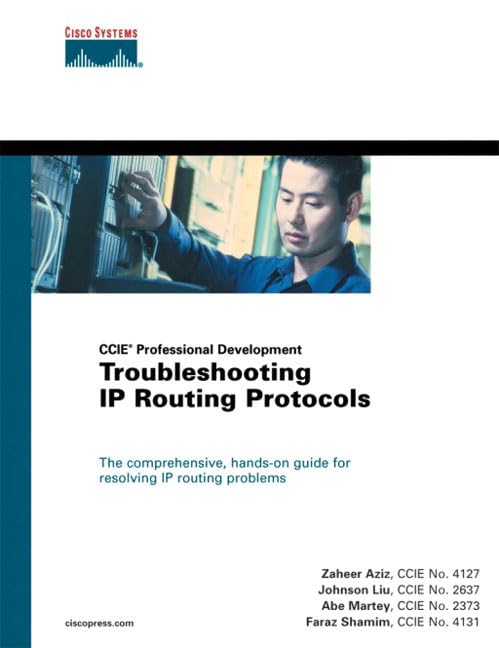
Troubleshooting Ip Routing Protocols
Price: $79.00
(as of Dec 23,2024 00:46:17 UTC – Details)
Publisher : Cisco Systems; 1st edition (January 1, 2002)
Language : English
Hardcover : 872 pages
ISBN-10 : 1587050196
ISBN-13 : 978-1587050190
Item Weight : 3.7 pounds
Dimensions : 7.75 x 2.25 x 9.25 inches
Troubleshooting IP Routing Protocols: A Guide for Network AdministratorsAs a network administrator, troubleshooting IP routing protocols is a crucial skill to have in order to ensure that your network is running smoothly and efficiently. In this post, we will discuss some common issues that can arise with IP routing protocols and provide some tips on how to troubleshoot and resolve them.
1. Check for Misconfigurations: One of the most common reasons for routing protocol issues is misconfigurations. Make sure to double-check your router configurations to ensure that they are correct and consistent across all devices in your network.
2. Verify Routing Protocol Status: Use show commands to verify the status of the routing protocols running on your devices. Check to see if the routing protocol is enabled, if its neighbors are reachable, and if routes are being exchanged properly.
3. Monitor Routing Tables: Keep an eye on your routing tables to see if routes are being learned and propagated correctly. Look for any discrepancies or missing routes that could be causing routing issues.
4. Check for Network Connectivity: Verify that your network devices are properly connected and that there are no physical issues causing connectivity problems. Check for cable issues, network interface errors, or any other issues that could be affecting network connectivity.
5. Troubleshoot Neighbor Relationships: If your routing protocol relies on neighbor relationships, make sure to troubleshoot any issues with neighbor relationships. Check to see if neighbors are established and if they are exchanging routing information properly.
6. Analyze Packet Captures: Use packet capture tools to analyze network traffic and identify any anomalies or issues that could be affecting routing protocol performance. Look for errors, dropped packets, or any other issues that could be causing routing problems.
By following these troubleshooting tips, you can effectively identify and resolve issues with IP routing protocols in your network. Remember to document your troubleshooting steps and solutions for future reference, and don’t hesitate to reach out to your network vendor or online forums for additional help and support.
#Troubleshooting #Routing #Protocols, Cisco Software
Data Center Cooling Troubleshooting: Tips and Tricks
Data centers are crucial for storing and managing large amounts of data, but they can also generate a lot of heat. Proper cooling is essential to ensure that the equipment in the data center functions efficiently and does not overheat. However, even with the best cooling systems in place, issues can still arise that require troubleshooting. In this article, we will discuss some tips and tricks for troubleshooting data center cooling problems.One common issue that data centers face is inadequate cooling capacity. This can result in overheating equipment, which can lead to system failures and data loss. To troubleshoot this issue, start by checking the airflow in the data center. Make sure that air is circulating properly and that there are no obstructions blocking the vents or air intake areas. Additionally, check that the cooling units are functioning properly and are set to the correct temperature.
Another common problem in data centers is uneven cooling distribution. This can result in some areas of the data center being too hot or too cold, which can affect the performance of the equipment. To troubleshoot this issue, consider rearranging the placement of the cooling units to ensure that air is being distributed evenly throughout the data center. You may also need to adjust the temperature settings on the cooling units to achieve a more consistent temperature throughout the facility.
If you are experiencing frequent cooling system failures, it may be a sign that the equipment is not being properly maintained. Regular maintenance of cooling units is essential to ensure that they are functioning efficiently and effectively. Make sure to clean the filters regularly, check for any leaks or damage, and schedule routine inspections by a professional technician to identify any potential issues before they become major problems.
In some cases, data center cooling issues may be caused by external factors such as high ambient temperatures or power outages. To troubleshoot these issues, consider installing backup cooling systems or generators to ensure that the data center remains cool even in the event of a power failure. Additionally, you may need to implement measures to reduce heat-generating equipment or improve insulation to maintain a stable temperature in the data center.
Overall, troubleshooting data center cooling problems requires attention to detail and proactive maintenance. By regularly monitoring the cooling systems, identifying and addressing any issues promptly, and implementing preventive measures, you can ensure that your data center remains cool and operational at all times. Remember to consult with a professional technician if you encounter any complex cooling issues that require specialized expertise.
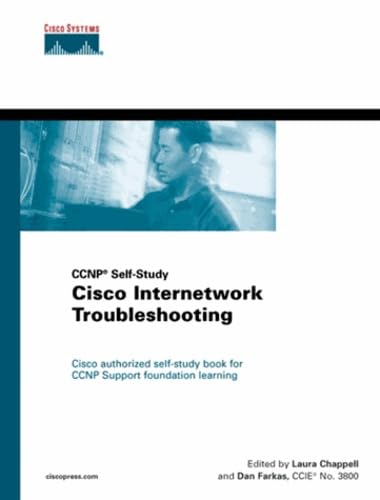
Cisco Internetwork Troubleshooting (The Cisco Press Certification and Training Series)
Price:$60.00– $21.99
(as of Dec 23,2024 00:15:44 UTC – Details)
Publisher : Cisco Systems; First Edition (January 1, 1999)
Language : English
Hardcover : 604 pages
ISBN-10 : 1578700922
ISBN-13 : 978-1578700929
Item Weight : 2.8 pounds
Dimensions : 7.75 x 1.75 x 9.75 inches
Are you looking to improve your skills in Cisco internetwork troubleshooting? Look no further than “Cisco Internetwork Troubleshooting,” a comprehensive guide in the Cisco Press Certification and Training Series.This book covers everything you need to know about troubleshooting issues in a Cisco internetwork, from basic connectivity problems to more complex routing and switching issues. With detailed explanations, case studies, and real-world examples, this book will help you become a master troubleshooter in no time.
Whether you’re studying for a Cisco certification exam or just want to expand your knowledge in network troubleshooting, this book is a must-have resource. So don’t wait any longer, grab your copy of “Cisco Internetwork Troubleshooting” today and take your skills to the next level!
#Cisco #Internetwork #Troubleshooting #Cisco #Press #Certification #Training #Series, Cisco Software
